Specify Data Source Settings (Database)
- 3 minutes to read
This page appears if you select Database on the start page.

Choose a Data Connection
Select an item from the data connection list.

For information on how to register data connections in your application, refer to the following help topics:
Choose Queries
Select tables, views, or stored procedures to include them in a data source as separate queries.
Schema loading in Data Source Wizard is optimized – the schema is loaded on demand when nodes are expanded to display child elements. You can use the DevExpress.Analytics.Wizard.AutoQueryPreload function to load the entire schema at once.
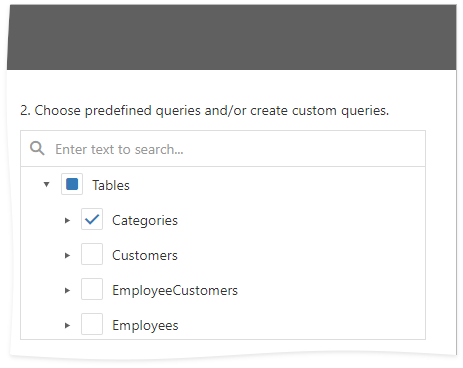
Check specific data fields if needed:

To join multiple data tables and shape the data, click the Queries category plus button. You can now create queries in the invoked Query Builder:

If you enabled custom SQL queries, the plus button opens a context menu. You can choose to run the Query Builder or Custom SQL Editor.

Important
Enable custom SQL queries only if you trust your users and environment. Make sure that you provide secure query validation to protect your database. See General Security Considerations for more information.
Click the Edit button ( ) to customize a query. Click the Delete button (
) to customize a query. Click the Delete button ( ) to remove a query.
) to remove a query.
When you click Finish and close the wizard, the data source appears under the Data Sources node in the Report Explorer. The Field List shows the data source structure.
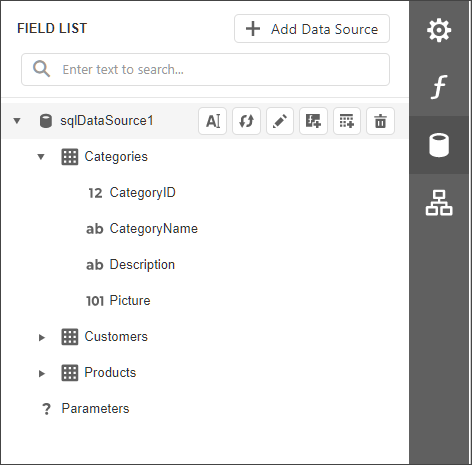
Configure Master-Detail Relationships
This step appears if you select two or more queries.
To create a master-detail relationship, click the master table’s plus button. Next, select the detail table in the list and connect the key fields.
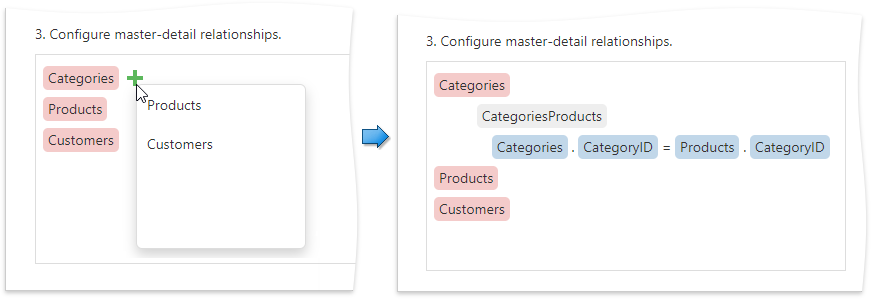
After the wizard is completed, the Field List shows the master-detail hierarchy.
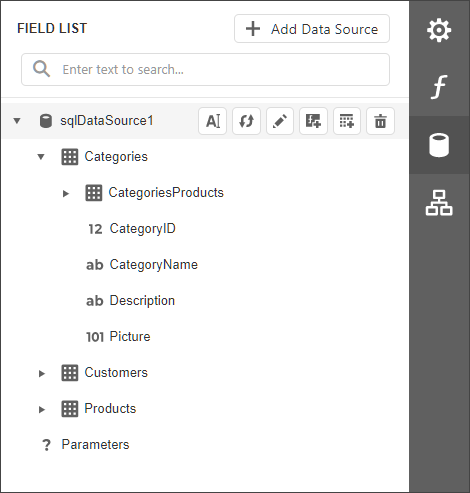
Configure Query Parameters
This step appears if you select a parameterized stored procedure or create a custom query.
Select a query and click the plus button to add a new parameter.
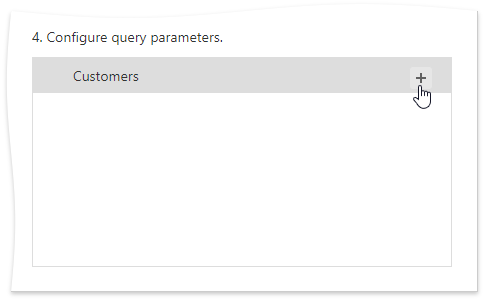
Click the Edit button ( ) to customize the parameter. Click the Delete button (
) to customize the parameter. Click the Delete button ( ) to remove it.
) to remove it.
Use the following approaches to specify a parameter value:
Assign a static value
Select the query parameter type from the Type drop-down list. Specify a value that matches the selected type.

Provide a dynamic parameter value
Set Type to Expression and specify the Result Type. Click the Value ellipsis button to construct an expression in the invoked Expression Editor.

If you design the report in the wizard, you can map a query parameter to an existing report parameter. Use the ?parameterName syntax.

For more scenarios with query parameters, refer to the following topic: Specify Query Parameters.